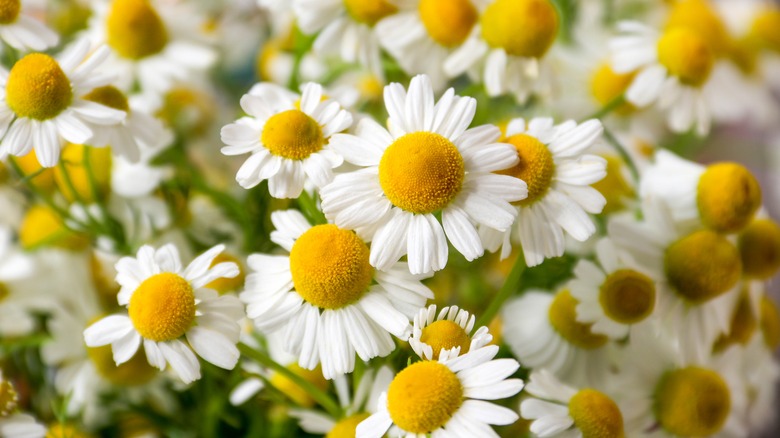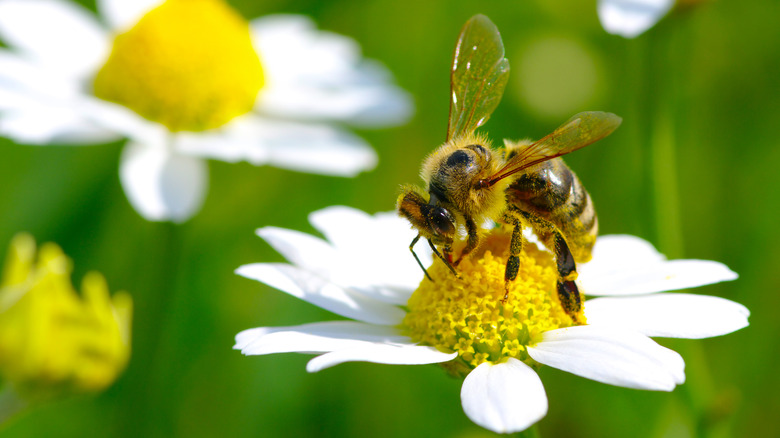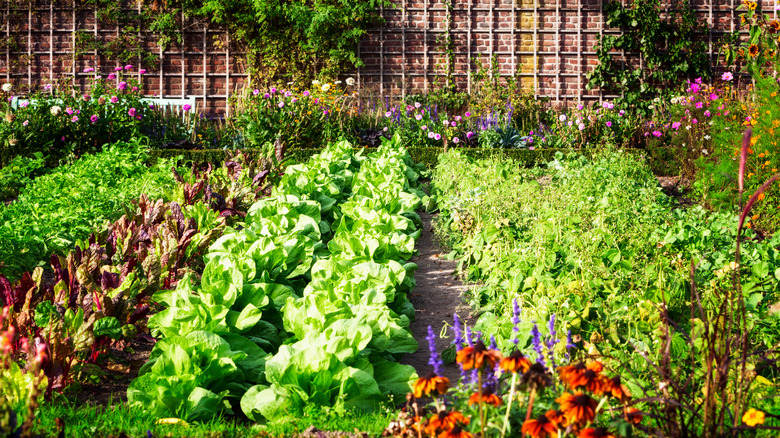Why You Should Use Chamomile Tea In Your Garden
You may recognize chamomile as one of the more popular varieties of herbal tea available on the market. However, the plant also has many qualities that make it a fantastic addition to your personal garden. The tea has a lengthy history, tracing its origins back to the ancient days of Egypt and Europe, where it was primarily used to cure colds and ward off pain. Chamomile today is used to resolve the same pains and illnesses, and is also said to improve digestion, boost the immune system, and help you get a better night's sleep, per Healthline.
Chamomile not only benefits humans who consume it in tea form, the herb is also beneficial toward other plants it's planted with — namely plants that commonly fall prey to disease and predatory insects. Whether used in its brewed state or planted alongside the rest of your vegetation, chamomile can dramatically impact the outcome of your crops, helping them grow larger and healthier. Here's how to incorporate chamomile into your garden, and why you should do so in the first place:
A natural pesticide
One of chamomile's best qualities is that it acts as a natural insecticide. Traditional pesticides can be hazardous to the insects who pollinate your plants, as well as to the people who are meant to consume them. Per the journal Science, one of nature's most prominent pollinators, honeybees, fare especially poorly from most pesticides, causing them to experience memory loss, weakened reproductive abilities, and, in extreme cases, death.
According to a report from the University of Georgia's Bee Program, bees' exposure to insecticides can have varied effects on their respective colonies. If a bee makes direct contact with an insecticide, the bee will likely die instantly. Though, if they come in contact with a flower that has been doused in the product, they could carry the poisonous substance back to their hive, where the queen and all other worker bees are placed at risk for survival.
Chamomile, however, is safe for bees. In fact, the herb's sweet scent lures helpful insects to your garden, which can help ensure your plants are properly pollinated and will grow with few to no limitations. To use chamomile as a natural insecticide, brew a batch of strong tea and let it sit for 24 hours; then spritz your plants lightly with the solution. Be mindful to only spray your plants when bees and other pollinators aren't buzzing nearby.
Great companion plants
Another reason chamomile makes for an amazing addition to your garden is the fact that it's a great companion plant for a variety of other crops. Companion planting refers to the process of growing certain plants, particularly fruits and vegetables, next to each other so that each crop will reap the most benefits in terms of nutrients, shade, and pest control. Chamomile can be planted alongside a diverse variety of greenery, likely because the crop contains properties that make it antifungal and antibacterial. The plant is especially beneficial for leafy green vegetables, like kale and cabbage, and for herbs like basil and mint. Companion planting with chamomile is said to even lead to fruits and vegetables tasting better, since planting the herb adjacent to edible plants is believed to increase flavor.
Further, chamomile can also possibly help "heal" your garden, specifically young seedlings. It's common for young seedlings to succumb to fungal diseases when initially planted. This process, referred to as "damping off" (via Wisconsin Horticulture) typically occurs in wet and cool environments where mold, fungi, and other harmful growths can kill your infant plants and trees. With its antifungal properties, though, chamomile is purported to help prevent damping off from occurring. To try this method of prevention, it's similar to using chamomile tea as an insecticide: mist seedlings with a brewed solution, along with the soil they're planted in, two to three times a week.


